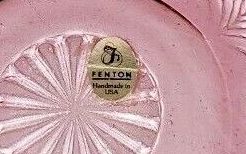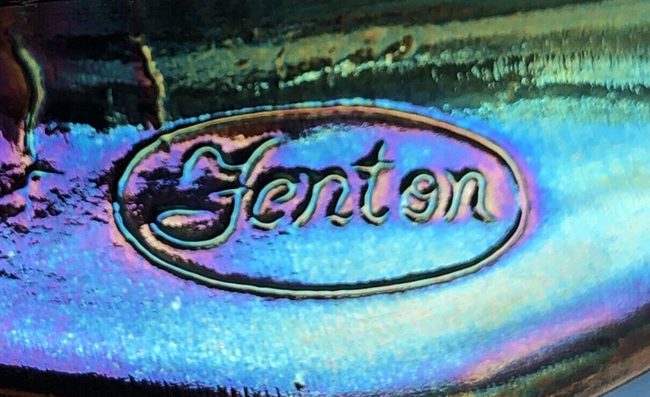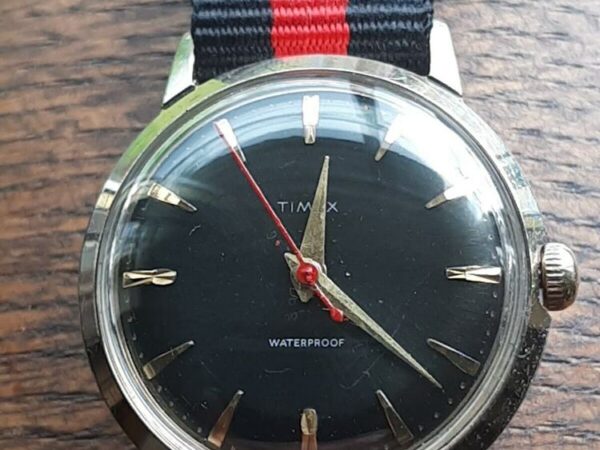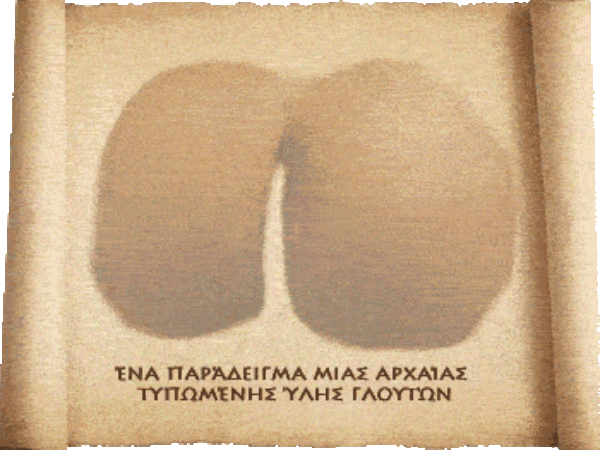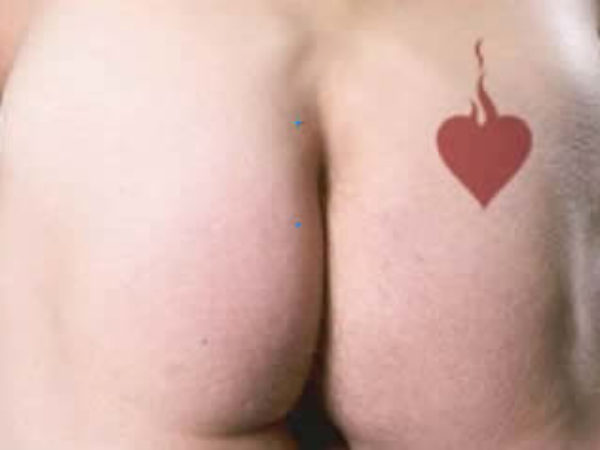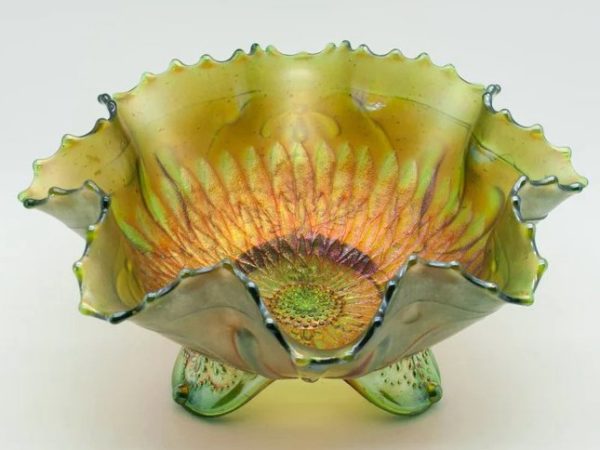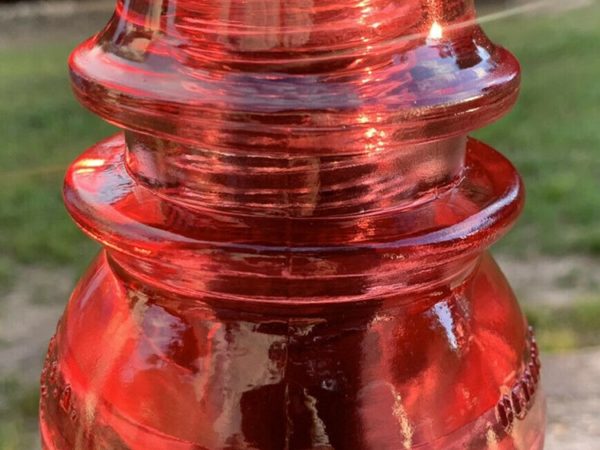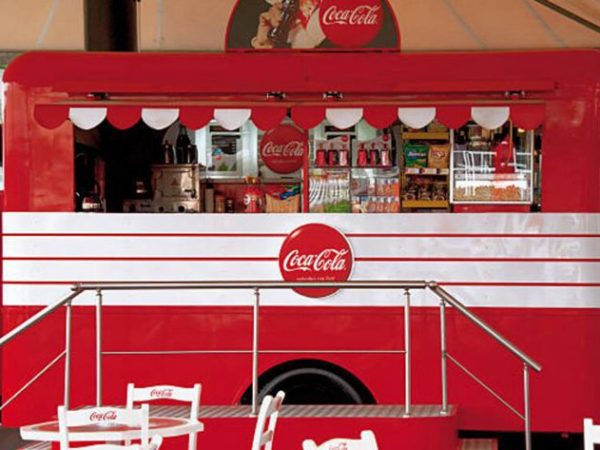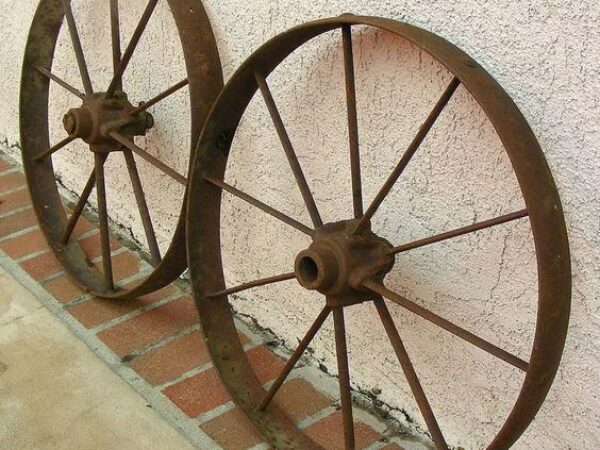The American art glass industry is indebted to the long and devoted service of the Fenton Art Glass Company. Since more than a century ago, the company has provided the world with timeless works of art that continue to attract attention.
Fenton Art Glass Company dominated the American glass industry from 1905 to 1930, surviving the Great Depression and World War II. However, Fenton’s history and resilience are nothing compared to their creativity.
If you are a collector or a Fenton lover looking for the perfect combination of beauty, style, and heart in your glassware, this article is for you. You will learn more about Fenton and its products.
Table of Contents
What is Fenton Glass?
Frank L. and John W. Fenton of Ohio founded the Fenton Art Glass Company in 1905, which became the largest handmade colored glass manufacturer in the United States.
R=The company is well-known for its innovative and unique colors, as well as painted motifs on pressed and blown glassware.
The Fenton Company was originally a glass painting company that made beautiful decorations on already produced “blank” glass until 1907, when their plant was built in West Virginia, which had the raw material for glass production.
The Carnival glass, first produced in 1908, is one of the most popular collector’s Fenton items. The company got its initial inspiration from Tiffany and Steuben’s iridescent glass and was referred to as “poor man’s Tiffany”.
Throughout its 100-year history, the company has produced glassware with numerous stunning patterns, colors, and decorations. The beautiful colors of Fenton glassware, particularly chocolate and golden agate glass, were created by Jacob Rosenthal, a popular glass chemist.
Fenton Glassware
The Fenton Glassware collection spans over 100 years and is far too large to list and/or count. They were, however, committed to creating the best glass designs in America. Glass styles and patterns are classified as follows:
● Carnival Glass (1907 – 1925; 1960s – 1970s)
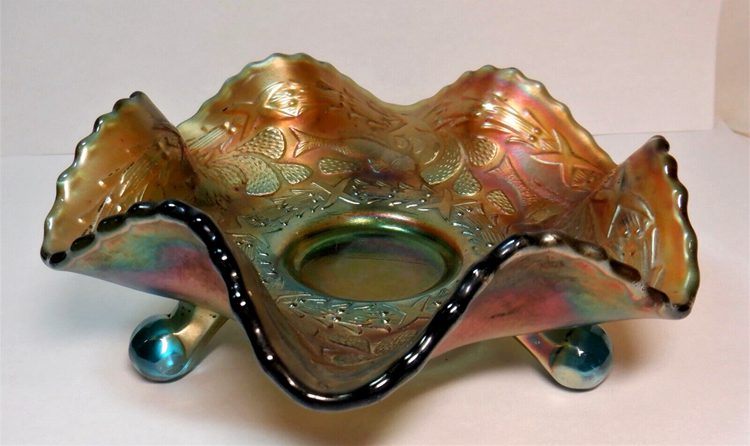
Carnival glass is pressed glass with an iridescent shimmer and an array of vibrant colors. Its luminescence was caused by adding metallic or mineral salt to the manufacturing process. It has a wide range of colors and patterns that attract collectors, with prices ranging from very low to very high.
The term “carnival” was coined in the 1950s when glass pieces with their design were distributed as prizes at carnivals and fairs. It is also referred to as rainbow glass, aurora glass, dope glass, taffeta glass, and “poor man’s Tiffany”.
This glass was originally called “Iridill,” and it was inspired by other glassmakers such as Tiffany and Steuben, but it was less expensive and later discounted. It was used by homes that could not afford electricity for brightness because of its iridescent finish.
● Custard Glass
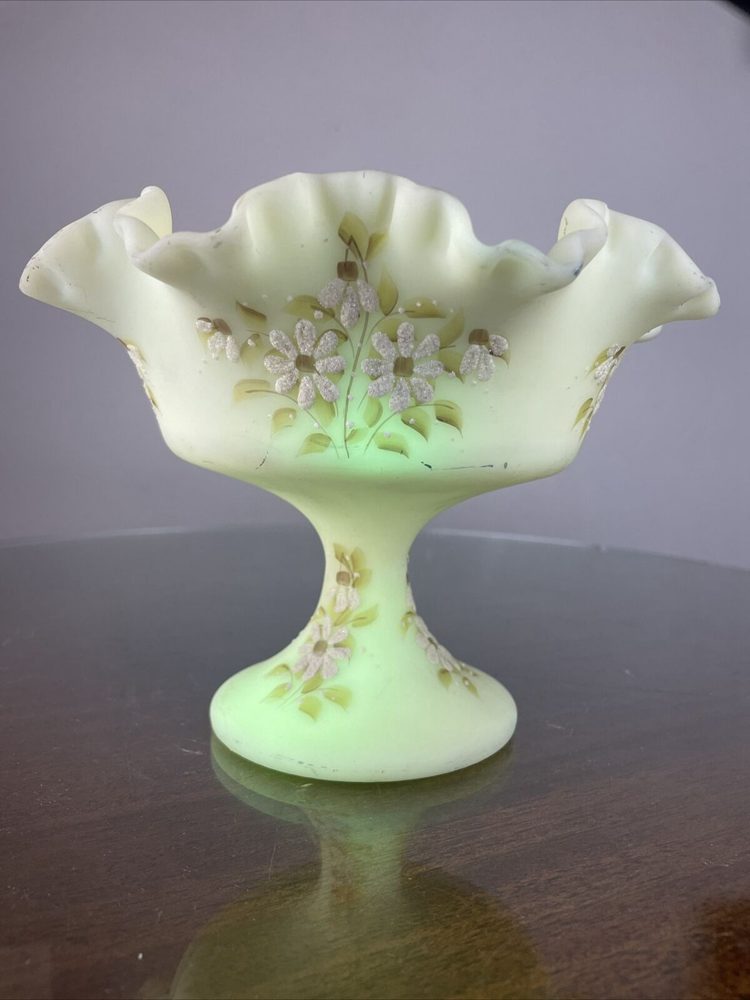
Custard glass, also known as “Ivory glass,” is a light yellow opaque glassware. It was one of the first colors of glass used 3500 years ago in Mesopotamia and Egypt. It later spread from Bohemia in 1870 to the United States in 1885.
From 1940 to 1983, Fenton Art Glass Company produced custard glass. Theirs were distinct due to the ruffled edges, and they glowed under ultraviolet light.
Their surface was also matte, dubbed “satin glass.” Fenton custard glasses featured designs of birds, flowers, fruits, and leaves. Roses are a popular design, and they can also have two gold lines on the edges.
● Hobnail Glass
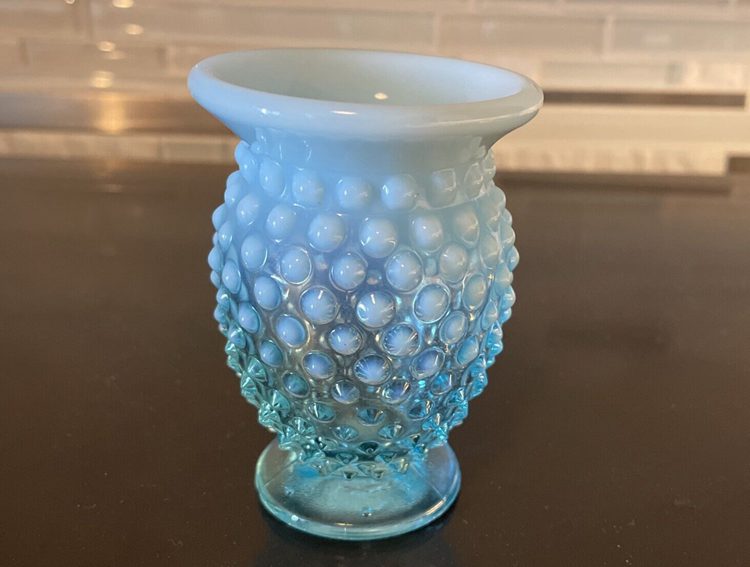
Hobnail glass was inspired by the hobnailed boots worn by American pioneers, which featured elevated knobs at regular intervals. It has the same appearance as the Victorian “Dew Drop Glass.” Fenton released its first set of translucent hobnail glassware in 1939.
Fenton made hobnail glass in various colors, including aqua blue, brown, clear, cranberry, and yellow. Cranberry glass, as well as cranberry opalescent glassware, which has a whitish tone on the vase neck and some hobnails, is very popular with collectors.
● Milk Glass
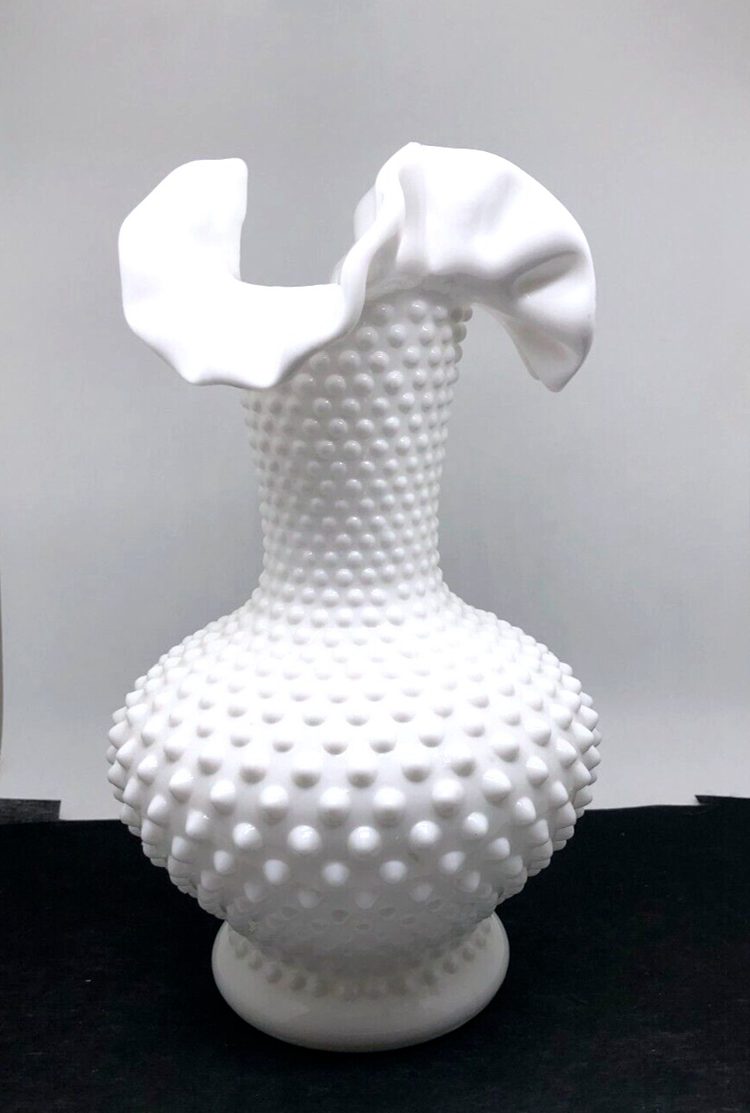
In contrast to other glass designs and patterns, milk glass was believed to possess intricate grace and timeless beauty. It was created by Angelo Barovier between the mid-15th and mid-16th centuries.
He used a technique called “Lattimo” to imitate Chinese porcelain. Fenton’s pre-1958 milk glass lacks the opacity and density of the glass made after 1958, which had a multicolored and glowing halo under UV light.
Milk glass with hobnails was popular in the 1970s and returned in the 2000s, but with lower values.
Rare Fenton Glass Pieces
Some of Fenton’s most sought-after creations can be difficult to find. Some are extremely rare because they were produced in small quantities for a specific event or order. Collectors usually seek these out because they have intrinsic value.
1. 1907 Carnival Water Lily and Cattail
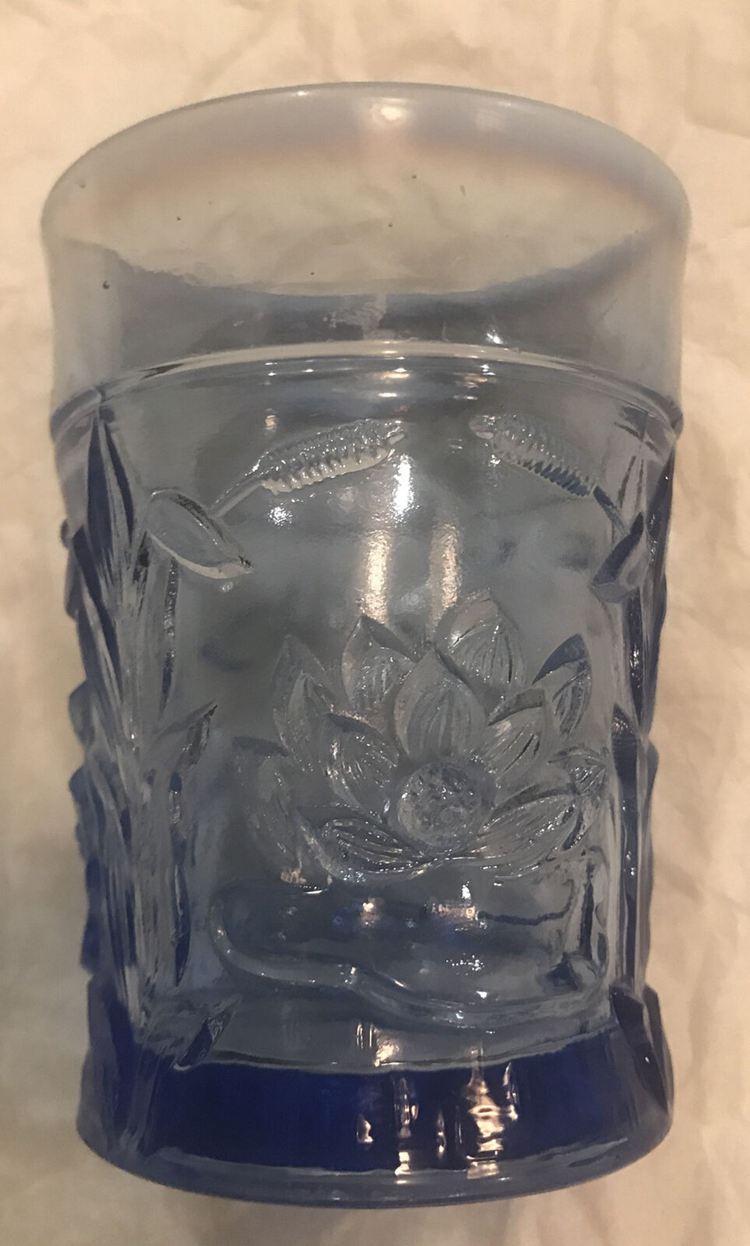
The rarity of this piece stems from the year, design, and color. Fenton began manufacturing glassware in 1907, the year it was founded. Carnival glass, which glowed with the multicolored design, was their first type of glass.
Waterlilies and cattails were among the few designs used by Fenton in his early years. These features distinguish this type of glassware. Glass pieces like this will become more scarce and valuable in the coming years.
- Year: 1907
- Estimated market value on eBay: $20
2. Fenton Wisteria Opalescent Glassware
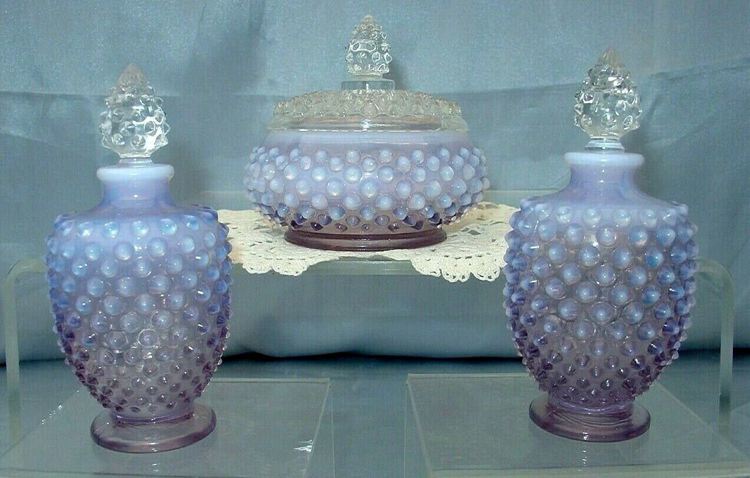
In 1944, Fenton created a line of glass pieces for Sherwin-Williams Paints. This collaboration was intended to promote Sherwin-Williams Paints, and the glassware was created in a unique color called Wisteria Opalescent.
Although most were made in Hobnail, a few others were made in different designs. Finally, the color makes all the difference, as only a few Fenton glasses were made in that color.
- Year: 1944
- Estimated Market Value on RubyLane: $390
3. Amberina Red Fenton Carnival Glass
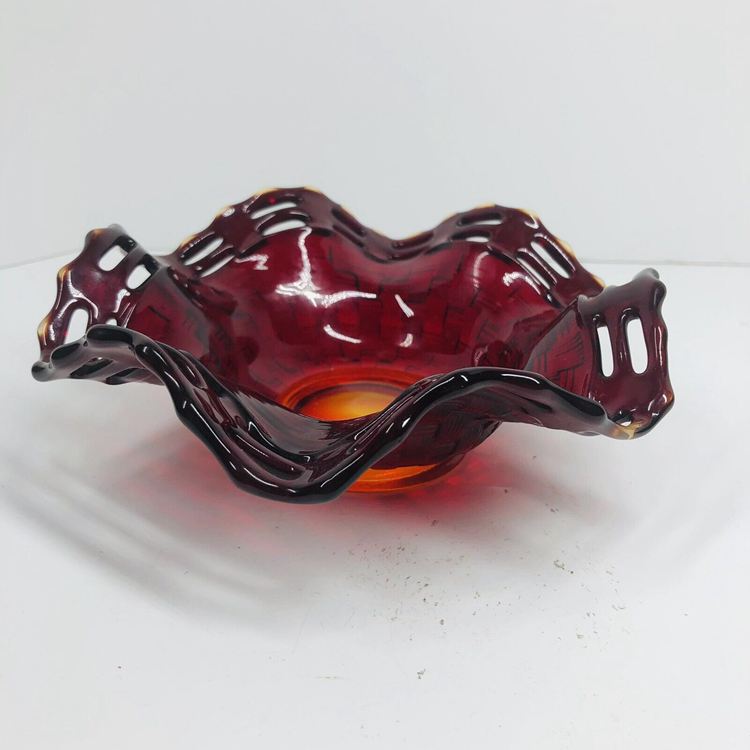
Amberina red is one of the rarest colors seen on Carnival glass. The color is described as a deep orange-red. With carnival glass in high demand among collectors, the rare colors will be more valuable than the common ones.
- Year: 1941 – 1973
- Estimated Market Value on eBay: $59
4. Plum Opalescent Fenton Carnival Glass Thumbprint Epergne
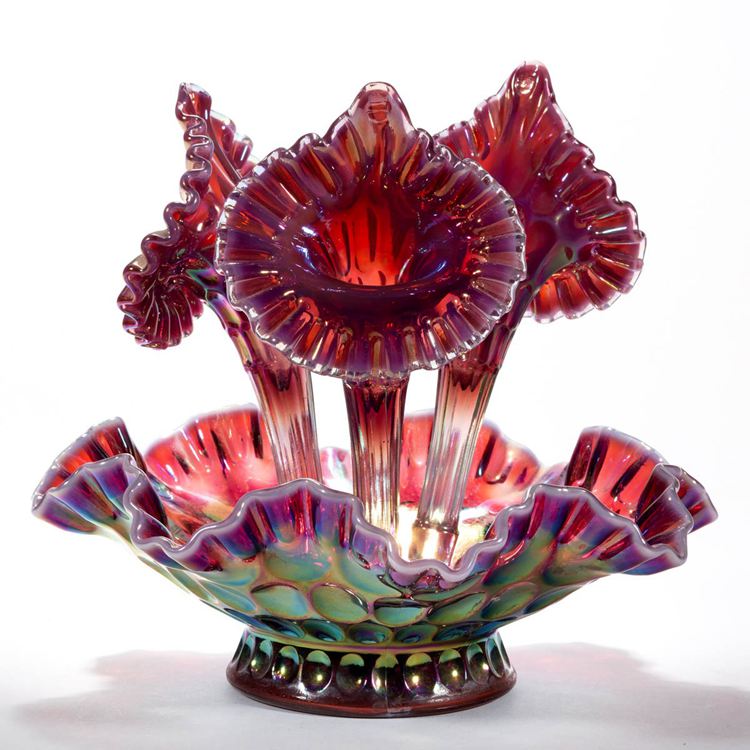
Plum is a rare color on carnival glass and a beautiful one too. Although this piece was made in the second half of the 20th century, it is still quite unique.
- Year: second half of the 20th century
- Estimated market value on Invaluable: $585
5. Fenton 14 inches Rustic Marigold Mid-Funeral Vase
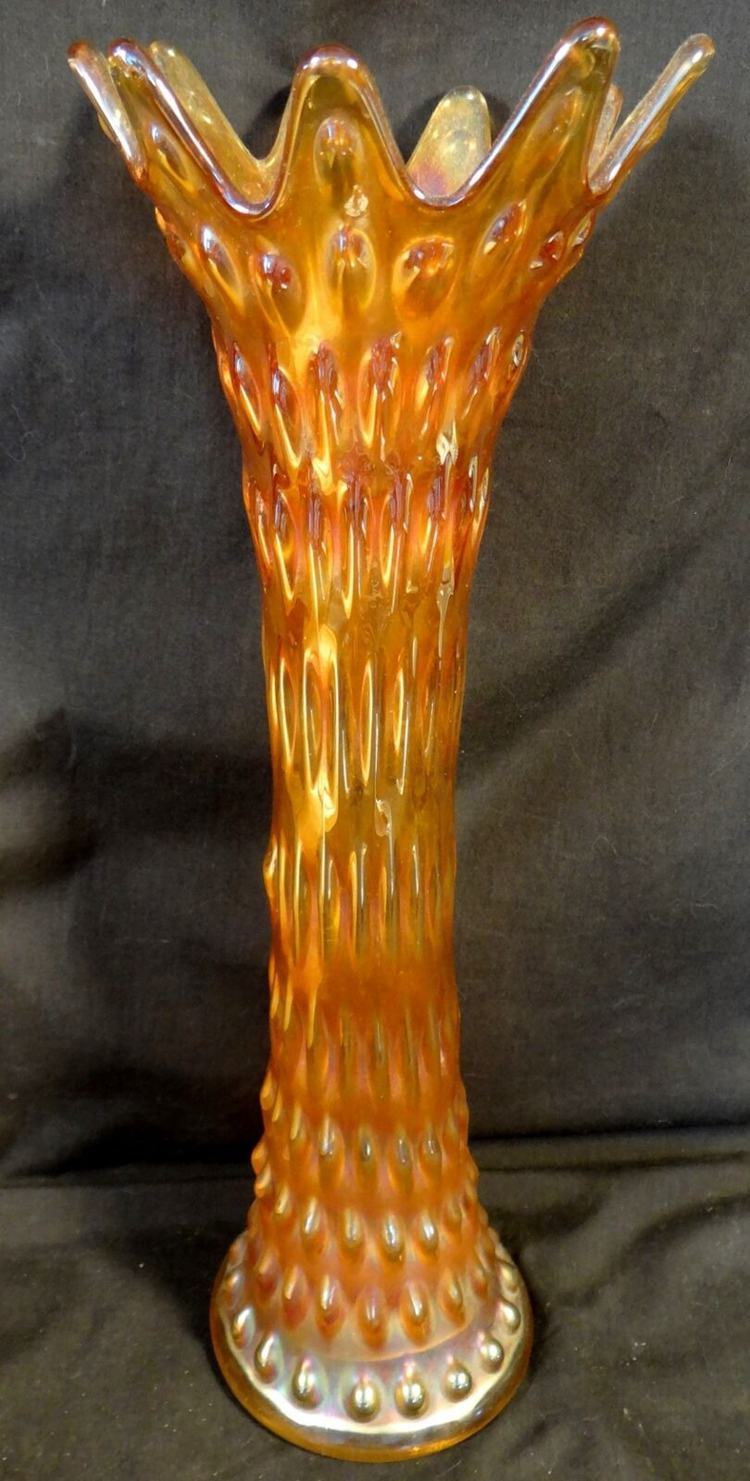
This unusual Fenton vase is larger than most and has a lovely marigold color on carnival glass. Marigold is another uncommon color used by Fenton in its early days. It was manufactured in 1909.
- Year: 1909
- Estimated market value on eBay: $160
6. Fenton Museum collection Ruby Carnival Diamond Lace Single Horn Epergne
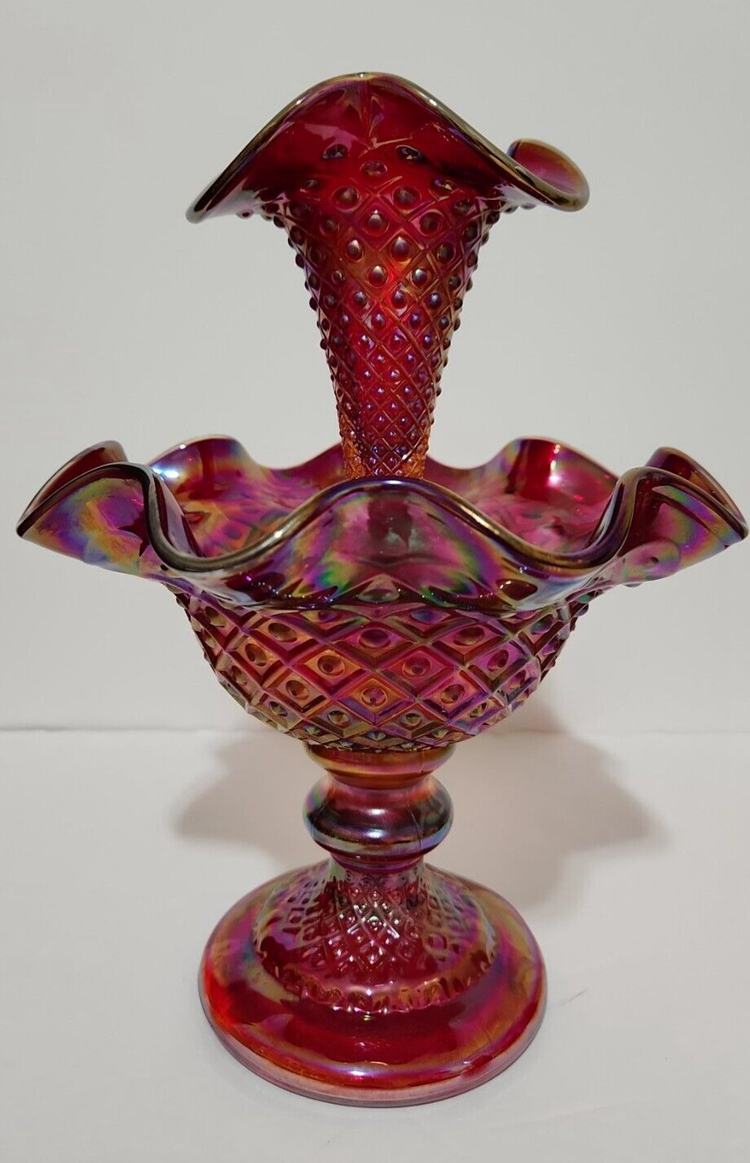
Unlike many other glassmakers, Fenton’s red glassware was truly red and stood out amongst the red. There are numerous shades of red, and Fenton created the most exquisite pieces.
This is why the red carnival made by Fenton is so popular among collectors. This Fenton museum collection piece from 2003 is a deep ruby red with diamond lace.
- Year: 2003
- Estimated Market Value on eBay: $297
7. Fenton Jade Turtle with Opalescent Aquarium
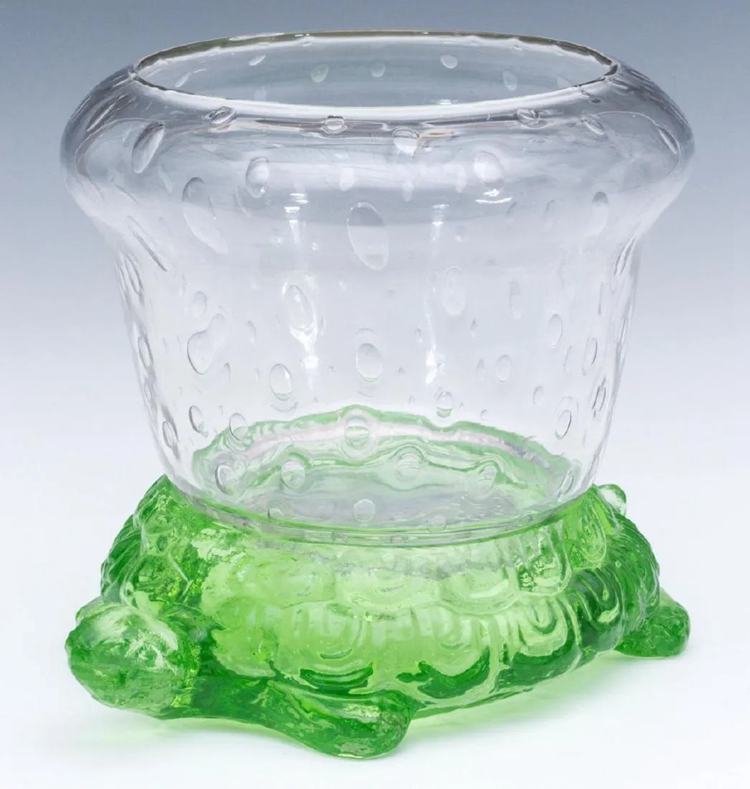
Due to their rarity, it is difficult to find these for sale, and when you do, they are extremely expensive. In the year 2020, a jade turtle with a controlled bubble aquarium sold on eBay for $1,195.
- Year: 1929
- Estimated market value: $1,195
8. Antique Mulberry Hand Painted Charleston Design
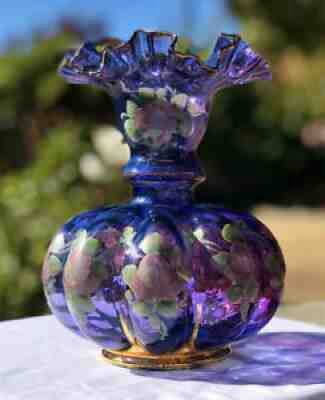
The Fenton Charleton vases result from a collaboration between two expert craftsmen who created some of the most beautiful glassware.
This flower-patterned mulberry vase is extremely rare. In 2021, this piece sold on eBay for $921. It is 8 inches long and 8 inches wide.
- Year: 1938
- Estimated market value of Fenton Collection Hero: $921
9. Vintage Charleton Design Ivy Green Overlay Glass
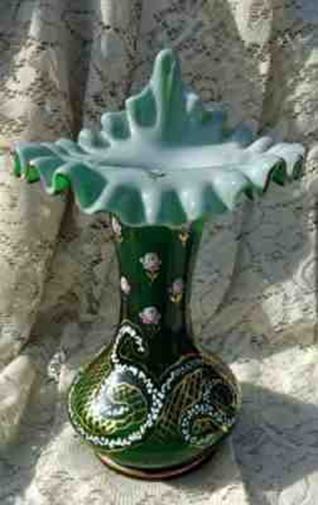
This ivy green overlay vase, one of the most difficult to find in the Charleton Line, is a priceless possession. Charleton’s hand-painted the roses and lattice over ivy green overlaid glass, which is one of Fenton’s rare pieces. In 2022, this piece sold for $239 on eBay.
- Year: around 1948 to 1951
- Estimated market value on Fenton Collection Hero: $239
10. Fenton Karnak Offhand Egyptian Vase Hanging Vines
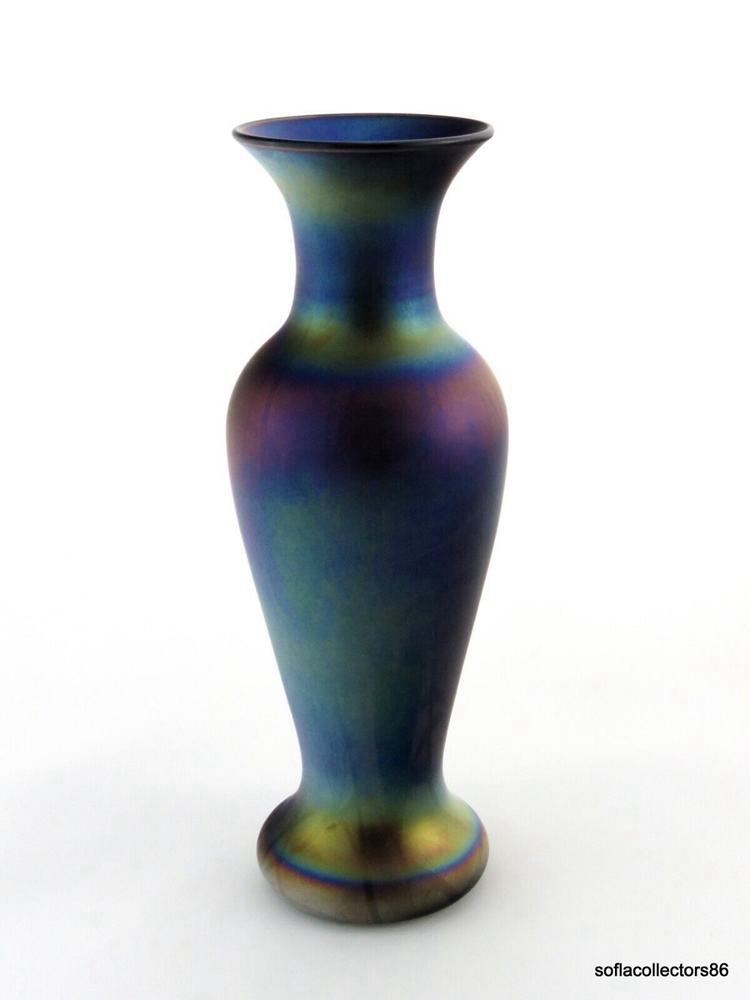
To create their offhand line, Fenton contacted some European designers who had previously worked for Imperial Glass. They were very expensive then, so they did not sell well.
This glassware, on the other hand, is among the most sought-after Fenton creations. These glass pieces can fetch up to $20,000 at auctions and online stores.
- Year: 1925 – 1926
- Estimated Market Value on eBay: $4,500
11. Jade Elephant Planter
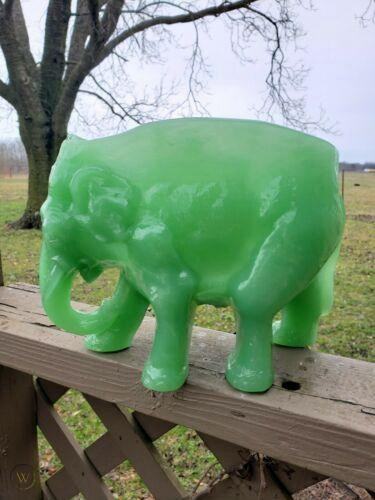
There are only a few dozen of these planters known to exist. It went for $1,800 on eBay. Another went for $4,500 at the Fenton Museum auction.
- Year: 1927
- Estimated market value here: $1,800
12. Fenton Gone with the Wind Lamp
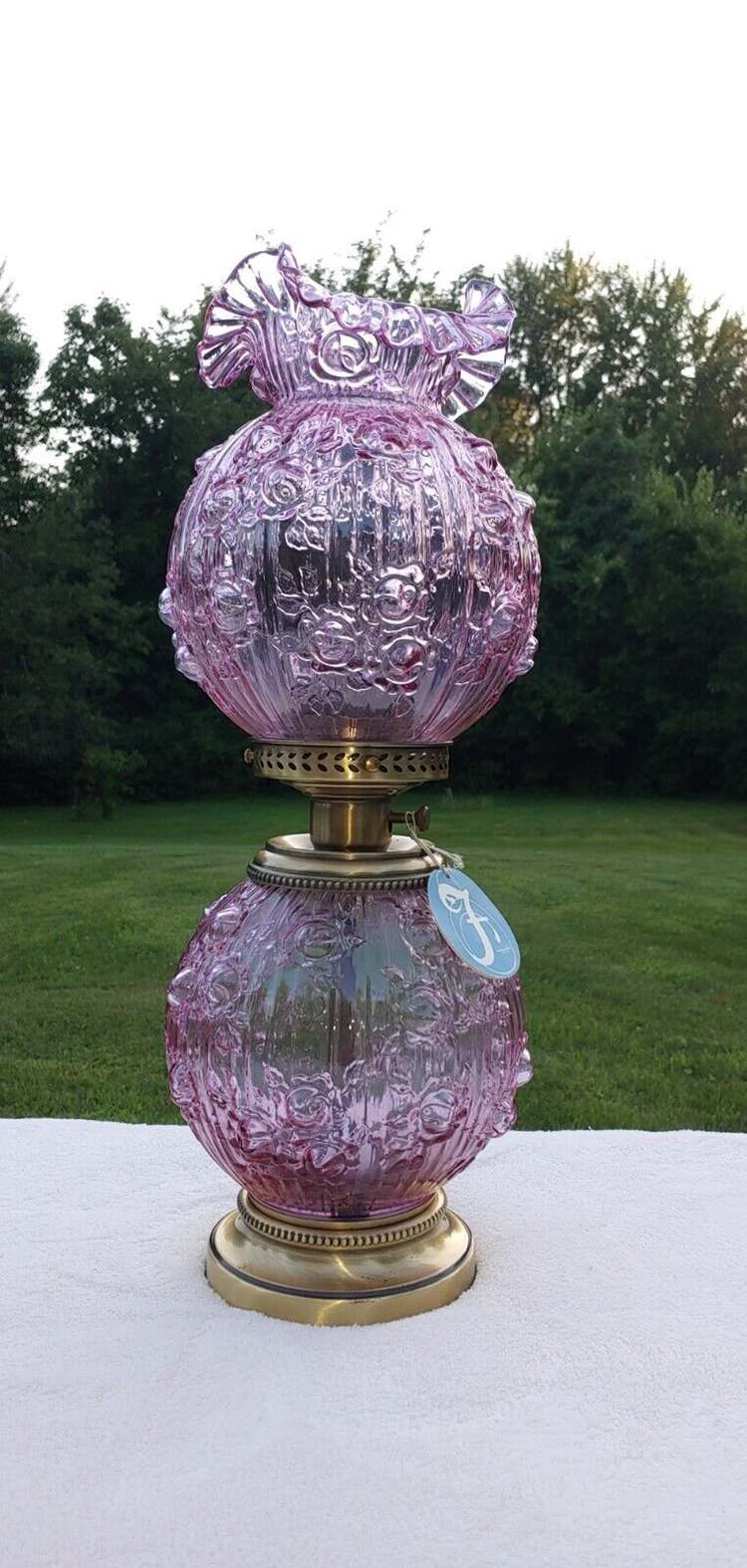
At Dorothy Taylor’s Contemporary Carnival Convention, a limited-edition Red Carnival Regal Iris double ball lamp with just 15 lamps was introduced. Fenton built these for the Kellett’s, and they sold off rapidly. One sold for $1,500 on eBay in 2019.
- Year: 1920 – 1949
- Estimated market value on eBay: $425
13. Fairy Light Lotus Mist Burmese
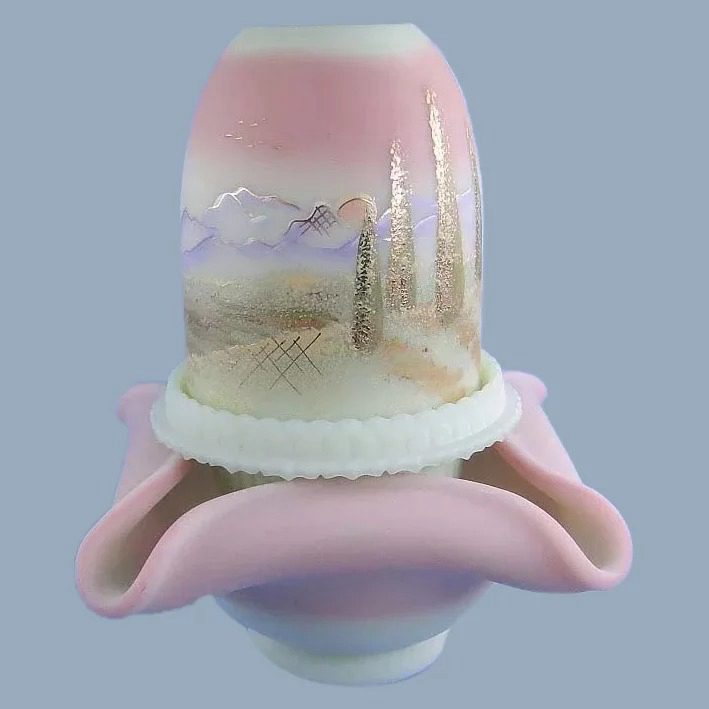
A limited edition of fairy lights handcrafted in lotus mist Burmese glass was introduced in the summer of 2005 but was withdrawn after only three months. They were part of a limited-edition platinum collection.
- Year: 2005
- Estimated market value on Ruby Lane:$230
14. Opalescent Iridescent Atlantis Fish Vase
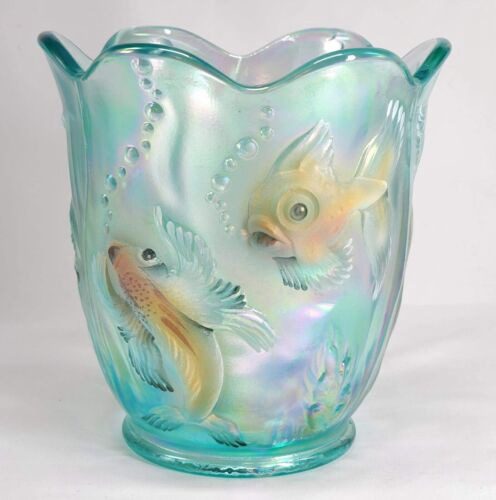
This Fenton blue Atlantis fish vase was designed in 1975 and is still being manufactured today. JK Spindler has also signed it.
- Year: 1975
- Estimated market value on ebay: $250
15. Opalescent Art Glass Basket Arch Button Color Changing
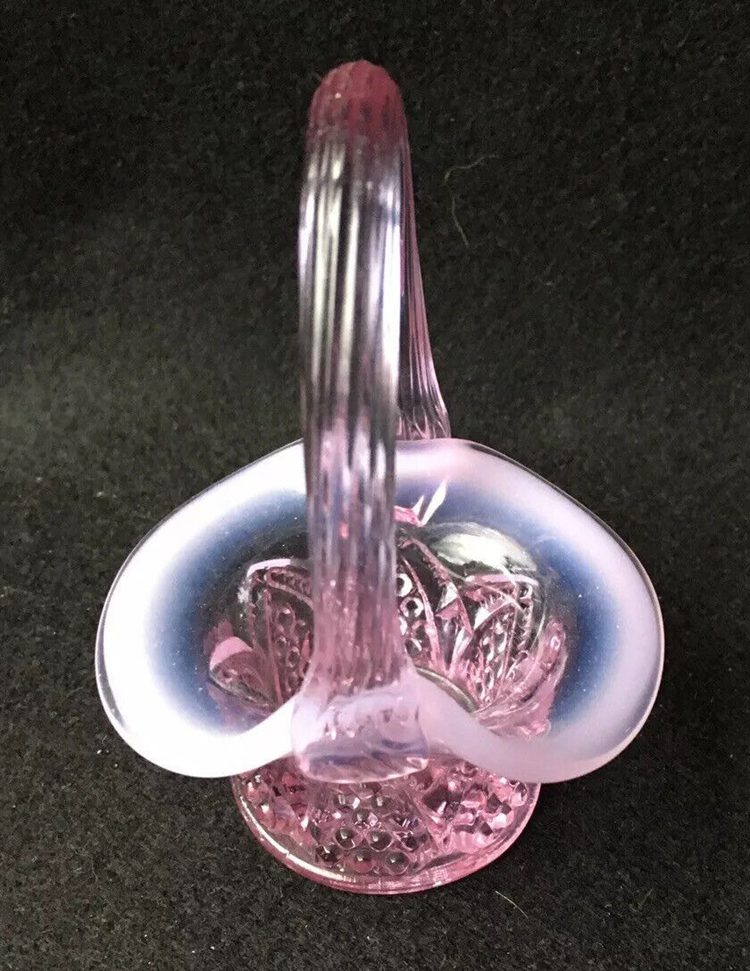
Fenton made some dichromatic pieces in the 1970s, and this piece could be one of them. It appears to change color in various lighting conditions, and the opalescent edge shimmers and sparkles.
- Year: 1970 – 1979
- Estimated market value eBay: $93
Fenton Glass Value
The Fenton Art Glass Company created many beautiful pieces that are considered collectibles today. There is a wide range of prices attached to Fenton glass, with the exceptional ones hitting thousands and the more common designs ranging from $15-$50.
In considering current trends and the natural flow of life, collectors believe that vintage and antique Fenton glassware will increase in value. This is because trends are in circles and even the commonest glass pieces will reduce in number as some break, damage, or disappear.
What is The Most Expensive Piece of Fenton Glass
In 2011, a rare Fenton purple butterfly and berry spittoon sold for $11,000 at auction, making them the most expensive Fenton glass pieces ever sold.
How to Identify Fenton Glass
With Fenton Art Glass Company’s long and successful history, finding a Fenton item can make your heart sing. However, because Fenton’s success prompted the fabrication of many copycats and fakes, it might raise suspicion.
Knowing the difference between genuine Fenton glass and a fake can be very careful. Fenton, like many other collectibles, has identifying marks, a specific style, and/or a feel that sets it apart from the crowd.
Fenton Markings
Several different types of marks are used to identify Fenton glass objects, and the year they were made. (FENTON LOGO HISTORY)
Fenton Paper Sticker:
This can be a bit tricky because Fenton used paper stickers to mark their glass before the 1970s.
Over time, the glue would have dried up, causing them to fall off, or they would have been removed. The oval sticker with the word “Fenton” on it is applied to the bottom of the glassware.
Fenton Logo Stamp:
The oval “Fenton” logo was also used in the 1970s, although this time it was stamped on the glass. It can be spotted on 1970s carnival glassware. It was later added to hobnail glass pieces in 1972. This stamp may go unnoticed first, so keep an eye out for a slight oval elevation.
Numbers:
Fenton also added numbers to the “Fenton” mark to indicate the decade in which the glass item was manufactured. The figures were 8 for the 1980s, 9 for the 1990s, and 0 for the 2000s. When you glance at them, they may appear unnoticeable.
Cursive “F”:
In 1983, Fenton started using a cursive “F” in an oval to mark the glass molds that were originally owned by other manufacturers.
Identifying Unmarked Fenton
How would you know if an unmarked piece of glassware was labeled as a Fenton by a store owner? There are a few things you may do or search for on the glass’s body to verify its authenticity.
- Examine a Fenton glassware catalog or collector’s book to become acquainted with Fenton’s distinct style. Studying the images will help you recognize a genuine Fenton when you see one.
- Check the bottom of the glass for pontil marks, which are generated by punty rods used by many makers to hold the glass while it is being crafted. Fenton, however, mostly uses snap rings. Pontil markings can be seen on rare pieces from the 1920s and modern hand-blown glass from Fenton.
- Finding bubbles or flaws in the glass shows that the piece is not from Fenton because they are known for their high-quality glass pieces.
- Stretch marks on one side of the glass caused by the stretching process help identify a Fenton work.
Fenton Glass Identification Colors
Throughout Fenton’s long history of producing stunning art glass, they have used a wide range of colors in their designs. Due to a lack of knowledge of the brand, these are frequently misrepresented by online vendors. While others remain unidentified.
Fenton’s unique history and style have to deal strongly with its colors and how the colors can be used to identify an unmarked piece or for dating purposes. So a mistagged or untagged Fenton’s color can be essentially misleading to the buyer and can muddle the piece’s value.
The issue is then with the descriptor’s level of knowledge as well as the photographer’s ability to show true color and the computer’s ability to display it properly.
Knowing and determining the exact color of a Fenton piece will help avoid duplicates and protect against purchasing painted pieces such as Burmese.
Fenton Milk Glass Value
Fenton’s milk glass pieces, like other Fenton creations, are exceptionally well done and beautiful. Milk glass shines with a royal presence in a space because of its ability to blend in a while attracting your attention, and collectors and buyers alike adore it.
Fenton’s glassware selection was not limited to purpose, shape, and style. Additionally, Fenton created a specific piece in a variety of colors, some of which were specific to the era’s fashion.
Unlike other unique colors and their somewhat regular counterparts, white milk glass was produced in almost every collection, which made it one of the most common glassware colors.
For instance, in collections where white milk glass was made alongside two other colors, the demand for the other colors is higher.
The demand for beauty at the time had a significant impact on the mass production of milk glass in whatever style. In the long run, however, this has reduced the monetary value of milk glass as a collector compared to other rarer colors.
The market value of vintage, antique, or contemporary collectibles is strongly influenced by the ease of access or rarity, the market tide in favor of the item or demand, and how well the item was maintained or conditioned.
Unfortunately, milk glass stands on the losing end because collectors desire less accessible items because they increase the chances of a higher return on investment.
The commonality of milk glass reduces its market value and the chances of a higher resale price. However, milk glass is affordable, and anyone can appreciate its grace and elegance.
How Much is Fenton Glass Worth?
Fenton glass, like any other collectible item, is valued based on its age, rarity, condition, and the artist who created it. As a result, the price of Fenton glass pieces can range from a few dollars to thousands of dollars, depending on those factors.
The value of Fenton glass is also determined by the economy. Compared to the 1980s and 1990s, the market for Fenton glass is relatively smaller, but there is always the possibility of increased value in the future because Fenton created timeless pieces.
Some of their glassware styles, however, may fall within a certain price range, particularly on online sales platforms.
Frequently Asked Questions
What is Fenton’s “Bread and Butter” Line?
Bill Fenton’s “bread and butter” line refers to the Milk Glass Hobnail, the company’s flagship pattern from 1952. It was given this name because the glassware sales helped Fenton survive difficult times.
What Makes Fenton Glassware Unique?
Fenton glass pieces feature rich and vibrant colors, paintings, and sculptures that highlight expertly crafted glass molds.
Is Fenton Still Operational?
The Fenton Art Glass company’s molds were purchased by the Fenton Gift Shop, the company’s major retailer, and they continue to produce exceptional glass today.
Final Words
The vastness of Fenton’s catalog can make it difficult for a collector or regular buyer/seller to determine the value of individual pieces. Moreso, using old catalogs may become obsolete as the market evolves with the trends.
However, we hope this article has answered your questions, and if you have any further questions or comments, please leave them in the comment section.

